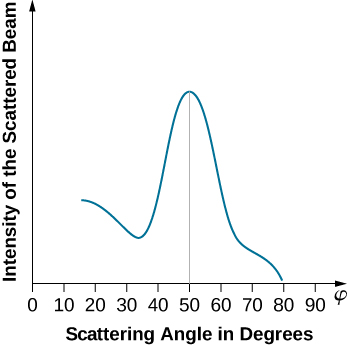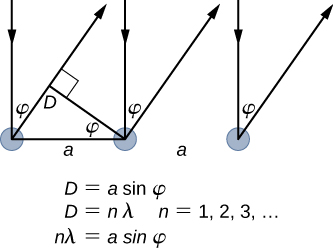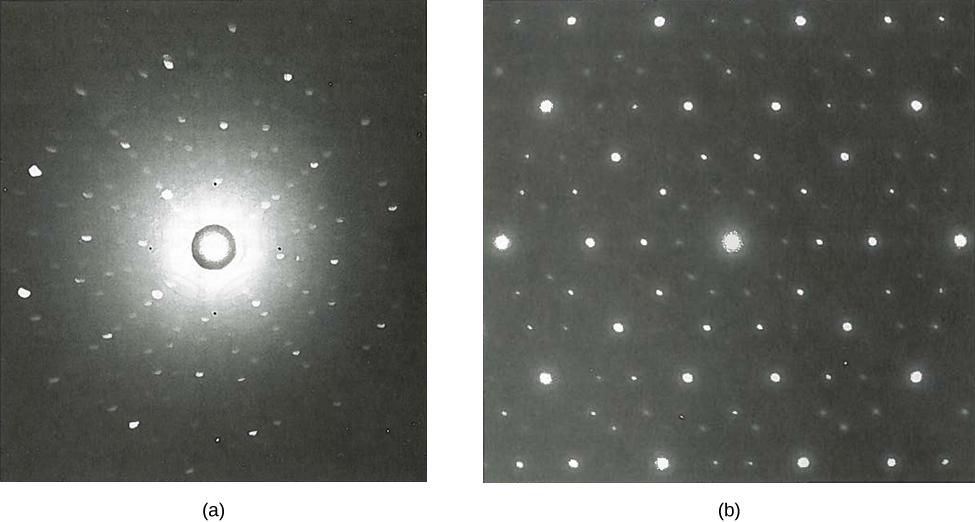| << Chapter < Page | Chapter >> Page > |
The lattice spacing of the Davisson–Germer target, determined with X-ray crystallography, was measured to be Unlike X-ray crystallography in which X-rays penetrate the sample, in the original Davisson–Germer experiment, only the surface atoms interact with the incident electron beam. For the surface diffraction, the maximum intensity of the reflected electron beam is observed for scattering angles that satisfy the condition (see [link] ). The first-order maximum (for ) is measured at a scattering angle of at which gives the wavelength of the incident radiation as On the other hand, a 54-V potential accelerates the incident electrons to kinetic energies of Their momentum, calculated from [link] , is When we substitute this result in [link] , the de Broglie wavelength is obtained as
The same result is obtained when we use in [link] . The proximity of this theoretical result to the Davisson–Germer experimental value of is a convincing argument for the existence of de Broglie matter waves.


Diffraction lines measured with low-energy electrons, such as those used in the Davisson–Germer experiment, are quite broad (see [link] ) because the incident electrons are scattered only from the surface. The resolution of diffraction images greatly improves when a higher-energy electron beam passes through a thin metal foil. This occurs because the diffraction image is created by scattering off many crystalline planes inside the volume, and the maxima produced in scattering at Bragg angles are sharp (see [link] ).

Since the work of Davisson and Germer, de Broglie’s hypothesis has been extensively tested with various experimental techniques, and the existence of de Broglie waves has been confirmed for numerous elementary particles. Neutrons have been used in scattering experiments to determine crystalline structures of solids from interference patterns formed by neutron matter waves. The neutron has zero charge and its mass is comparable with the mass of a positively charged proton. Both neutrons and protons can be seen as matter waves. Therefore, the property of being a matter wave is not specific to electrically charged particles but is true of all particles in motion. Matter waves of molecules as large as carbon have been measured. All physical objects, small or large, have an associated matter wave as long as they remain in motion. The universal character of de Broglie matter waves is firmly established.

Notification Switch
Would you like to follow the 'University physics volume 3' conversation and receive update notifications?